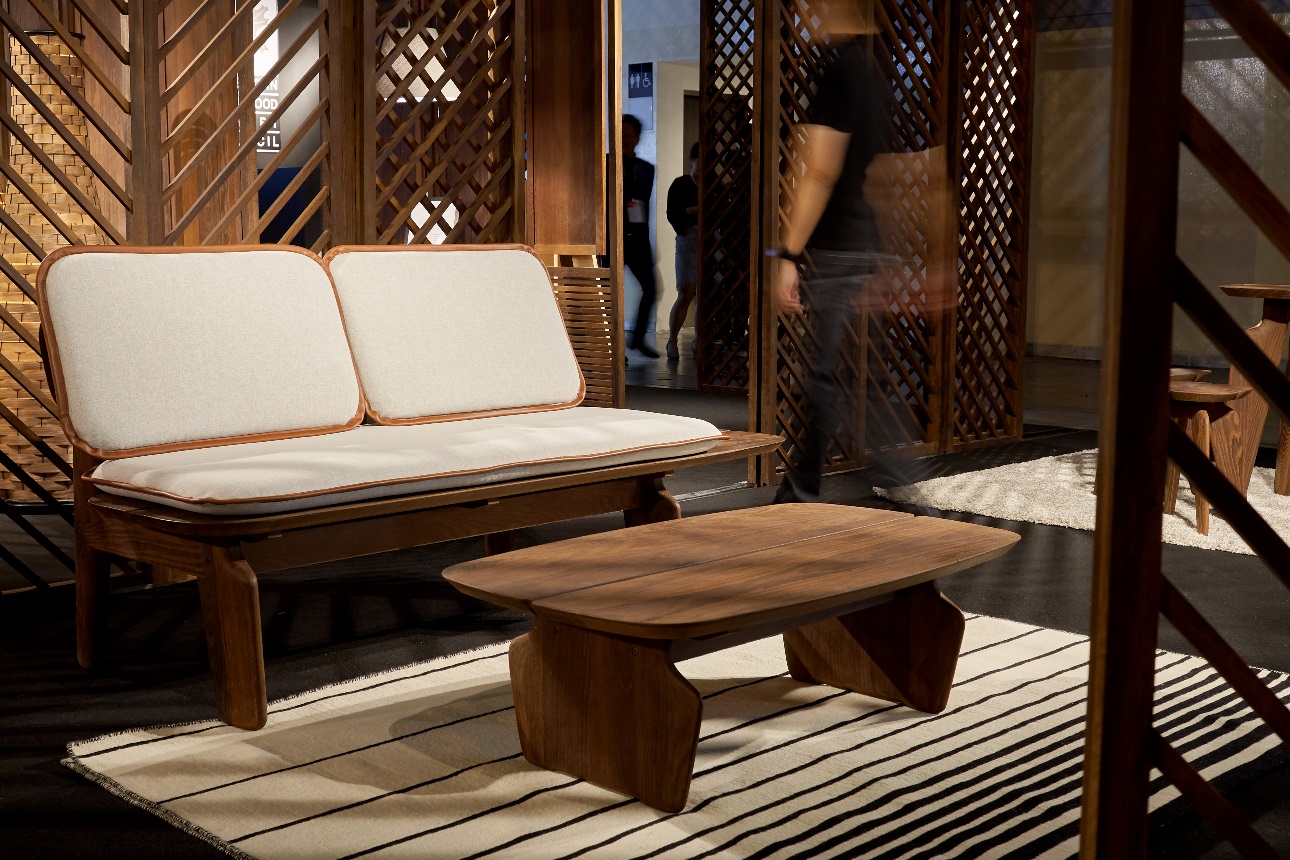Home > Case Studies > Renowned Singapore Furniture Designer Jarrod Lim: Struggling to Incorporate Nature in Your House? Move Your Living Room into the Garden
RENOWNED SINGAPORE FURNITURE DESIGNER JARROD LIM: STRUGGLING TO INCORPORATE NATURE IN YOUR HOUSE? MOVE YOUR LIVING ROOM INTO THE GARDEN
Held each year, the International Furniture Fair (IFFS) is an important component of the Singapore Design Week. The fair is the largest furniture fair in Singapore with the best reception from designers in Southeast Asia. The American Hardwood Export Council (AHEC) is a frequent guest at the IFFS and well reputed for bringing new ideas to the industry. This year, AHEC had the pleasure of inviting the renowned Singapore furniture designer Jarrod Lim to design the exhibiting pieces.
Jarrod Lim is the founder and creative director of Hinika, a home design brand. As an award-winning designer, his works have been exhibited in Europe, the United States, Asia and Australia. He’s received numerous awards, including American designer achievements (Pinnacle Awards) and Australian Young Designer of the Year Award.
Lim’s works are mostly made of wood, preferring luxurious themes and the grandiose walnut. He’s been working with AHEC for more than 10 years, during which he’s exhibited the beauty of American hardwood through various styles and inventive angles at major trade shows in China and Southeast Asia. The works exhibited this year are a breakthrough for both sides, bringing epoch-making changes to the home and timber industries.
“AHEC hopes to create a pavilion that combines the characteristics of indoor and outdoor spaces. All of the AHEC exhibits use ‘indoor materials’ for ‘outdoor applications’ to demonstrate the potential of thermally modified (TMT) American hardwood in exterior home design,” introduced by Lim. “AHEC is paying more and more attention to discovering and promoting the design potential and aesthetic value of American hardwood.”
Indoor materials are species of American hardwood like red oak, white oak, tulipwood, maple and cherry. Due to the temperature and humidity differences outdoors, wood is usually restricted to being an indoor material. TMT treatment lets these hardwoods survive in harsh weathers and shine brilliantly in pleasant weathers.
It is understood that the TMT process has two key benefits. The first is that the equilibrium moisture content is permanently reduced which greatly improves the stability properties. The second is improved by the removal of the hemicelluloses and carbohydrates from the wood during the treatment process, the two main food sources for wood destroying organisms, thereby increasing the durability of hardwood. Durability class 1 (very durable) which is equivalent to tropical timbers such as Ipe can be achieved with thermally modified American hardwoods. Importantly, the whole of the cross section of the timber is modified during the process, so profiles can be machined after treatment.
TMT isn’t a new concept. The ancient Vikings already discovered that singed wood lasts longer when building defensive fencing for fortifications. Studies on the possible benefits of TMT had already begun in the 1930’s in Europe and the US but it never reached commercialization. It wasn’t until the late 1990’s that Scandinavia first introduced the commercial method of thermal modification to improve durability and stability of native softwoods. Arriving in the present, TMT technology has finally matured enough for commercial applications on hardwood. AHEC hopes that TMT will bring a wealth of opportunities for American hardwood.
The exhibits designed by Jarrod Lim for AHEC constructed of the material processed in Indonesia by Omega Mas in Java. One of the furniture collections, which had been launched at the IFMAC show in Jakarta in September, was then tested outside in the Indonesian rain for five months. After a light sanding, it was sent to Singapore for the show. It is enough to witness its high adaptability to the outdoor environment.
Lim explains: “This series uses wood species popular in Chinese markets, the red oak and white oak. The wood color changes and darkens with the TMT process while maintaining a constant color throughout, ensuring that the visible color doesn’t change during the sawing and molding processes. What’s interesting is that the color of TMT-treated red oak and white oak is similar to walnut wood, which is popular with many furniture manufacturers and consumers, making it easier for environmentally friendly furniture made with American hardwood to be a part of people’s lives.”
Furniture Displays Designed by Jarrod Lim for AHEC at the 2018 Singapore International Furniture Fair




About American Hardwood Export Council (AHEC)
The American Hardwood Export Council (AHEC), headquartered in Washington DC, USA, is the leading international trade association for the US hardwood industry. AHEC represents the committed exporters among US hardwood companies and all major US hardwood production trade associations. Concentrating on providing architects, designers, traders, processors and end-users with technical information on the range of species, products and sources supply.
The American Hardwood Export Council (AHEC) Southeast Asia and Greater China (SEA & GRCH) office was opened in Hong Kong in 1992 to serve and oversee nine Asian markets including Mainland China, Taiwan, Hong Kong, Singapore, Malaysia, Thailand, Indonesia, Philippines and Vietnam.
For more details, please visit the AHEC Southeast Asia & Greater China website:
www.ahec-china.org
